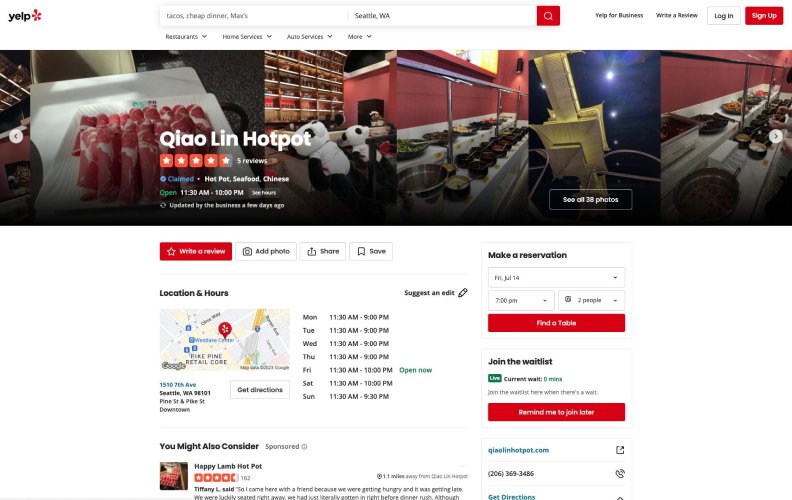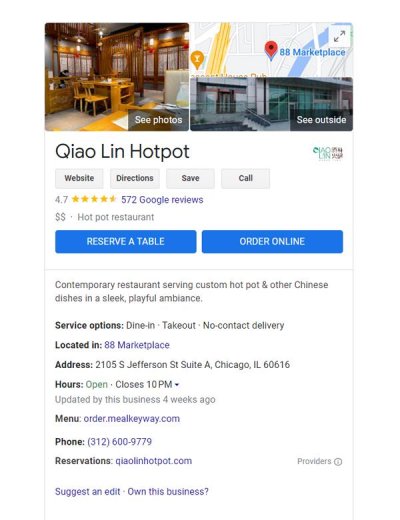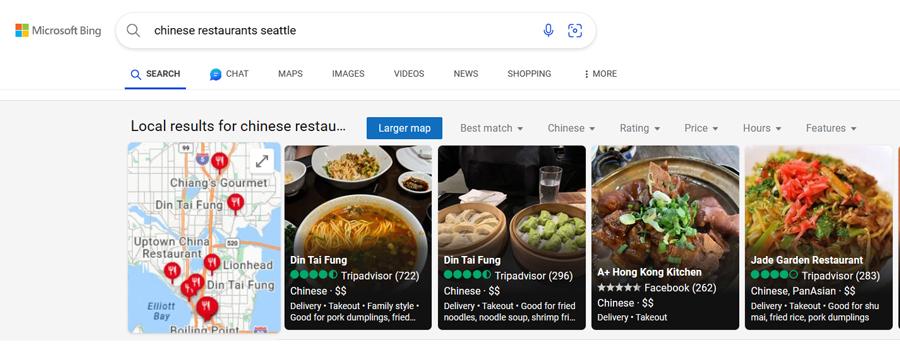Local marketing is a core component of building a successful small business, and it can be done affordably. Reaching local customers takes a unique focus and knowledge. To help you succeed with your local marketing strategy, we unpack 13 of the best methods for getting the word out about your small business, from deploying direct mail and email campaigns to establishing loyalty programs and offering coupons.
1. Create a Direct Mail Campaign
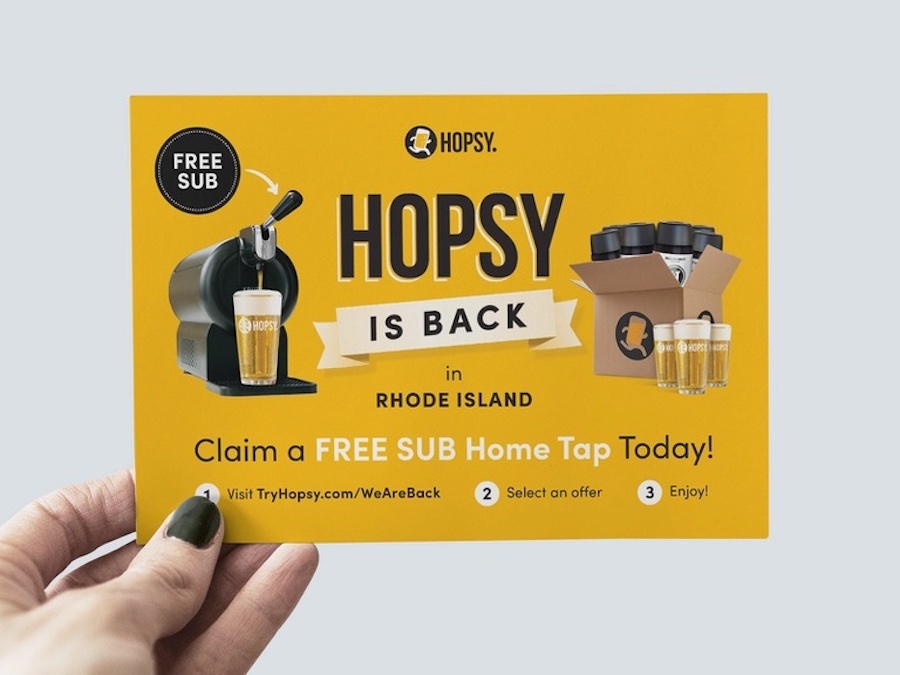
This postcard includes a strong, clear call to action. (Source: Dribbble)
Sending a postcard or brochure directly to consumers in your area is a great way to connect with potential customers, announce new products or services, and extend special pricing. Direct mail doesn’t have to be expensive, either. In fact, sending direct mail is one of the most cost-effective means of reaching your target market.
Executing a direct mail campaign is easy when you partner with a direct mail service like VistaPrint. With a direct mail provider, you can create your campaign, purchase a targeted mailing list, and send your direct mail all in one place.
Looking for some inspiration? Check out our roundup of the best direct mail marketing ideas.
2. Send Engaging Email Marketing
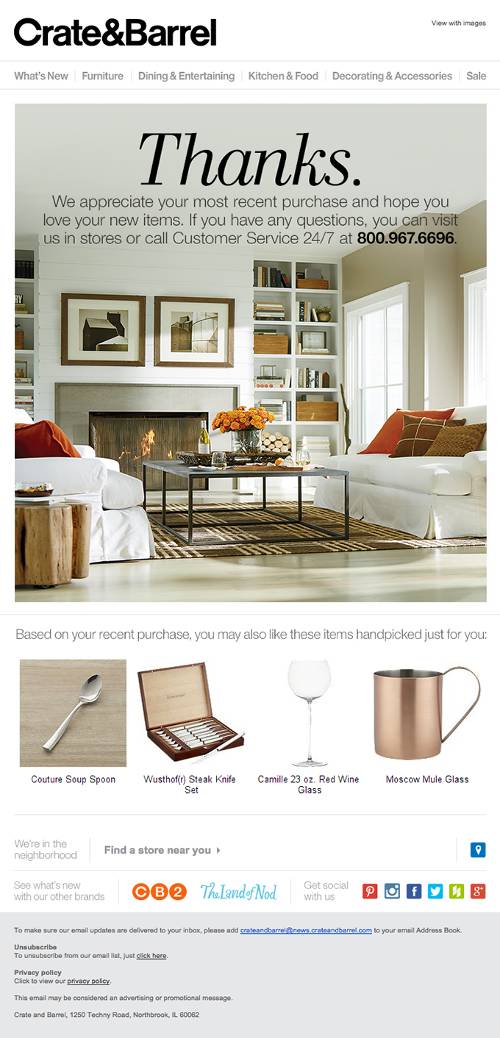
Crate & Barrel email marketing offers specials and related products.
(Source: Really Good Emails)
Crafting permission-based email campaigns is a great way to improve customer retention and repeat business. Most customers are more than willing to provide their email address to businesses they frequent. How you use those email addresses can drive revenue growth. Send emails that encourage the customer to make a purchase by offering special discounts or announcing new products and services.
Email marketing can be used to:
- Announce new products
- Inform your customers about special offers
- Deliver unique ways to use products
- Send coupons or discount offerings
- Educate and nurture leads
- Generate revenue through upselling and cross-selling
- Re-engage lapsed customers
- Support major announcements about your business
Consider using email marketing software to help craft attractive email messages and track effectiveness of your campaign. Services like HubSpot offer templates that you can use to create your campaign, and they keep track of who’s opened your email and who hasn’t. You can see how well your campaign is performing.
Want to learn more about how to use mass email to get leads and sales? Find out what an e-blast is and see examples of effective email marketing campaigns.
3. Contact Customers Through Text Message Marketing
Another way small businesses can engage with customers is through text messaging. Text messaging utilizes a customer’s mobile phone number to deliver information about products or services. Text messages are convenient, fast ways to reach customers wherever they are. They’re also high-engagement forms of media.
According to text messaging service Podium, text marketing has a 98% open rate. Using a text messaging service like Podium lets you easily reach out to customers who’ve opted in for text messaging from your small business. You can use text message marketing to send coupons, announce special events, or reveal new products and services.
4. Grow With Hyperlocal Social Media Marketing
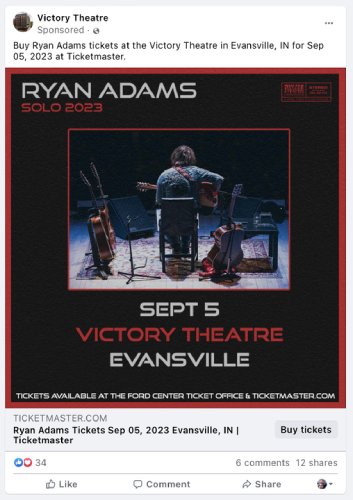
A theater in Evansville, IN, is advertising a Ryan Adams concert on Facebook. (Source: Facebook)
Hyperlocal social media marketing utilizes the power of social networks like Facebook and Twitter to market to specific parts of your service area. You can use hyperlocal social media marketing to target specific households in a community or ZIP code by advertising on Facebook.
To do this, you’ll need to create a Facebook business profile (and for that, you need a personal one first). Then you can create your ad account and use the advanced ad targeting tools to hone in on specific ZIP codes and demographics within that ZIP code. With the right audience profile, you’ll even be able to target specific neighborhoods. If you’re looking for assistance building your hyperlocal campaign, you can enlist the services of a local marketing agency and jumpstart your online presence.
5. Grow Your Brand Online With Local Website Marketing
Local website marketing starts with optimizing your site with locale-based keywords. This local search engine optimization (SEO) tactic helps when people search for a local business like yours online, as they generally include a reference to the city or region in their search query. So by having these keywords on your website, it’s more likely to be displayed in local online search results.
Additional local website marketing strategies to consider include:
- Ensuring your site loads fast and looks good on mobile devices
- Adding new content to your site regularly, such as publishing a blog article each week
- Getting links back to your site with quality content and business listings
- Getting traffic to your site from other organic channels, like social media and email marketing
- Creating a Google Business page and getting reviews on Google
Struggling to get web traffic? Try Wix—it tops our list of the best website builders for SEO with an amazing array of tools and features to help your site get found online.
6. Advertise With Google Local Services Ads
Advertise your business online to potential customers in your area with Google Local Services Ads. Eligible businesses can place ads that show up whenever potential customers in your area search for the services you provide. The ads are typically less expensive than regular Google ads because you pay by the lead generated, not by the click.
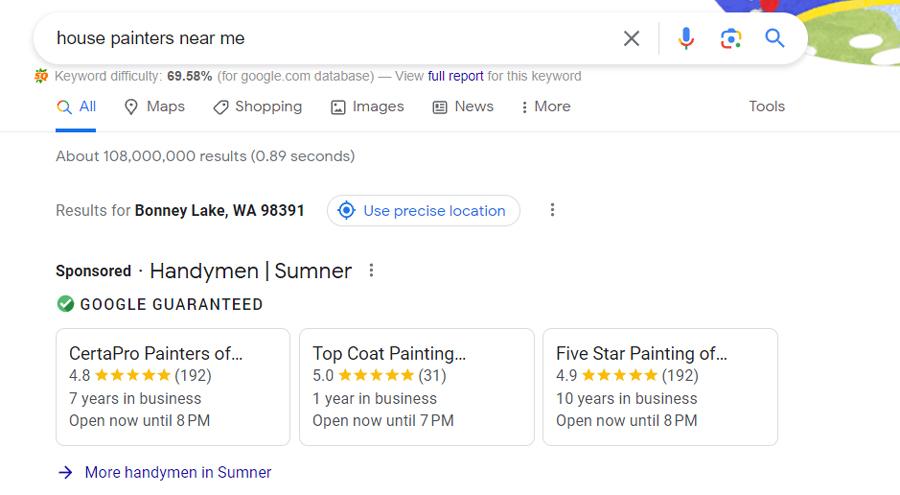
An example of a search for “local house painters” displaying Local Services Ads on Google
Eligible businesses are displayed with a Google Verified badge and review rating that increases customer trust. Some local businesses are even eligible to become Google Guaranteed, which further increases customer trust.
7. Retain Customers With a Loyalty Program
Creating a loyalty program is a great way for some small businesses to keep customers coming back again and again. They take two forms: regular discounts or free prizes for reaching a set threshold for purchases. With regular discount programs, customers provide certain information—email addresses, phone numbers, or mailing addresses—in exchange for a fixed discount on each purchase. Once enrolled, whenever they come in, they receive a discount.
The second type of loyalty program relies on keeping track of a customer’s visits to your business and offering them incentives for repeat purchases. These can take the form of punch cards, total receipts, or points that a customer can amass and redeem for discounts, special offers, or free products.
Loyalty programs are simple enough to manage. You can purchase specialized loyalty program software that tracks purchases. Or you can simply issue punch cards that you punch with each visit. Once a customer has accumulated enough points or punches, they get the promised prize. Regardless of which type of loyalty program you offer, you’ll keep customers coming back again and again.
8. Grow Your Customer Base With a Referral Program
One of the best ways to attract new customers is through word of mouth from existing customers. You can encourage word-of-mouth referrals by offering a customer referral program. These programs work by offering exclusive benefits to customers who send new customers your way. Benefits include free products or services, special prizes, or discounts on new purchases.
Collecting referral information can be accomplished in numerous ways. One way is to provide customers with coupons they can distribute. Another method is to ask new customers who referred them. No matter how you get word-of-mouth referrals, you can grow your customer base by implementing a formal referral rewards program.
9. Claim Profiles on Google, Bing & Yelp
According to BrightLocal, more than 87% of consumers use Google to research local businesses. That number only goes up when you add in Yelp and Bing.
Local digital marketing is an important part of your small business promotions. Start by claiming your local business profiles at Google, Yelp, and Bing. This is a great way to make sure your small business gets in front of potential customers when they’re searching for your products and services.
Read more about claiming your profile on:
Did you know? Digital local marketing ideas, like adding your business to online business directories, gives customers more ways to find your business and boosts your SEO.
10. Host Special Events
Attracting customers with special events can start with a grand opening celebration, but it doesn’t have to end there. You can host special events for customers ranging from holiday open houses to product launches and more. For example, a clothing boutique might host a fall fashion show to highlight new styles for the season.
Special events represent the opportunity to generate excitement in your customer base, draw in new customers, and grow your brand presence. You can even use special events to drum up free publicity for your business through the use of press releases.
11. Announce New Products or Promotions With Press Releases
A well-written press release is an often overlooked tool in the arsenal of promoting small businesses. However, learning how to send a press release can help garner free media coverage of your business and put your name front and center before potential customers.
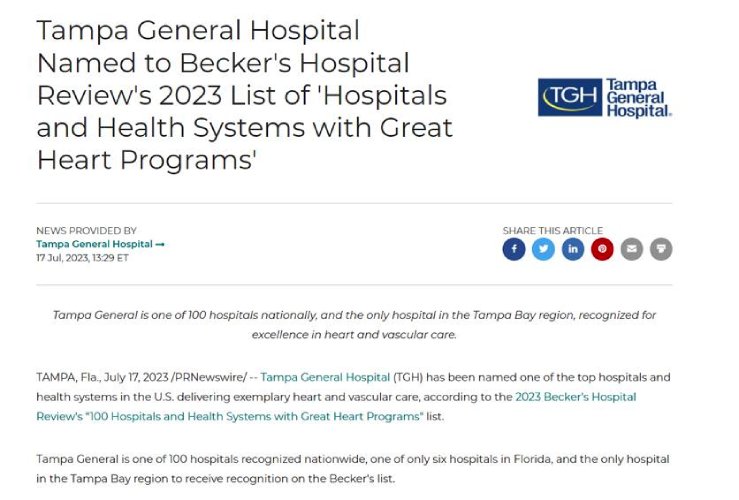
An example of a local business press release announcing an award (Source: PRNewswire)
Press releases are informational dispatches you send to media outlets to let them know when you have newsworthy items to share. There are many different types of press releases you can use to get the word out about your business locally. These can include:
- Special events like grand openings or open houses
- Awards and recognition
- Hiring or promotions for key roles
- To frame a story with a crisis communication announcement
- Launching a new product or service
- Announcing a partnership or acquisition
- Participating in givebacks or community events
- Announcing an expansion to a new location or market area
Sending a press release doesn’t have to be difficult, either. Make your job easier when you review how to write a press release.
Pro tip: You can build a media list and pitch your story yourself (but it’s going to take a large time investment), or you can utilize a press release distribution service. Press release distribution services are an affordable way to ensure you get the message out to the widest possible audience.
12. Get Customers Back With Digital Remarketing on Google
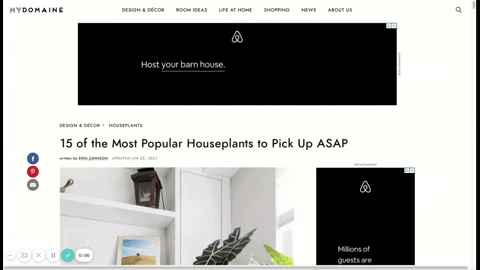
An Airbnb web banner remarketing ad that behaves like a game
Remarketing is a form of display ads consisting of web banners on unrelated websites that appear only to customers who have previously visited your online presence. To use Google Ads for remarketing, all you have to do is sign up for Google Ads and embed a code in your website.
Any time visitors to your site visit websites that are running Google ads, there’s a good chance your banner ad will be selected and displayed. Not only does this keep your business in front of them, but it’s also very affordable. Remarketing ads are typically far less expensive than other Google pay-per-click (PPC) advertising.
13. Offer Coupons to Increase Sales
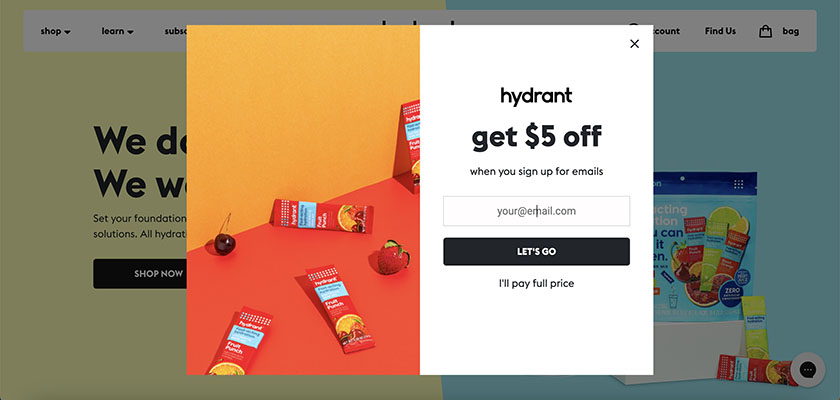
A digital pop-up coupon is a great way to incentivize customers to share their email address. (Source: Hydrant)
Coupon marketing increases sales by providing customers with incentives to redeem the coupon. Typical coupons offer special pricing on certain products and services. Coupons might also offer other incentives, such as buy-one-get-one-free (BOGO) offers. There are myriad ways to deliver coupons, including:
- Print media like newspapers
- Direct mail
- At point-of-sale transactions
- Email marketing
- Text messages
- Fliers, brochures, and more
Resources for Local Marketing
Building a local marketing campaign requires the tools to make your good ideas a reality. Marketing tools can help with tasks as simple as laying out good business cards to designing a banner for your grand opening. Whatever the project, you need the resources to execute it. Here are just a few of the resources you can tap into to kick your local marketing campaign up a notch:
- Visit Canva: Canva is a free online graphic design suite with templates and design elements for virtually all types of marketing materials, from simple logos to brochures. Learn more or find other options on our list of the best sites for logo design.
- Visit VistaPrint: If you need business cards, flyers, banners, or any other kind of printed marketing materials, look no further than VistaPrint. VistaPrint offers a full line of print-on-demand marketing products, with easy-to-use templates and design software as well as quality printing shipped right to your door.
- Get expert help: Startup marketing agencies like Straight North offer a bevy of services for local marketing, including local SEO and advertising.
- Visit Mailchimp: You put a lot of effort into collecting all those customer email addresses—put them to good use with Mailchimp. Mailchimp is an email marketing platform designed to help you publish attractive, engaging mass email messages to your audience.
- Visit BrightLocal: BrightLocal provides a suite of local SEO tools so you don’t get lost in the digital landscape. Rank higher on Google and Bing, grow your local audience, and keep your brand in front of potential customers when they’re searching for local businesses.
- Visit eReleases: Writing and sending press releases takes time and know-how. While you can go it alone, you give your brand a better chance of getting local press coverage by getting professional press release writing services and mass distribution from publicity experts, like the team at eReleases.
- Visit Wix: Wix’s artificial intelligence (AI) website builder makes local online marketing a snap with AI-generated websites, content, and images as well as advanced search engine optimization (SEO)—all baked in. Try it for free to see all the tools available for building a high-quality website (and your brand presence) online.
Don’t start creating local marketing ads without a plan. Build your local marketing strategy using our guide to creating a local marketing plan with free template.
Frequently Asked Questions
A local marketing strategy includes promotional tactics directed toward consumer or business prospects in a given locale. These include online, offline, and advertising tactics as well as strategies for increasing brand affinity and referrals locally.
There are many ways to promote a small business in a local (or even hyperlocal) market. Social media ads offer extensive local ad targeting tools, for example. Additional strategies include advertising in local newspapers, sending direct mail campaigns, placing door hangers in prime neighborhoods, and using signage and local billboards.
To attract customers within a local market (or any market), it’s important to first clearly define your ideal customer types (e.g., customer personas) and then develop strategies and craft sales pitches to reach them. This allows you to hone in on the marketing channels and tactics that will bring the best return on investment.
Bottom Line
Local advertising ideas and marketing opportunities are as varied as the human imagination. Tapping into the power of local and hyperlocal marketing can help you attract new customers and keep the ones you have coming back over and over. With just a little planning, you can build an effective local marketing campaign to maximize your advertising budget and forge long-term relationships with your customers.
